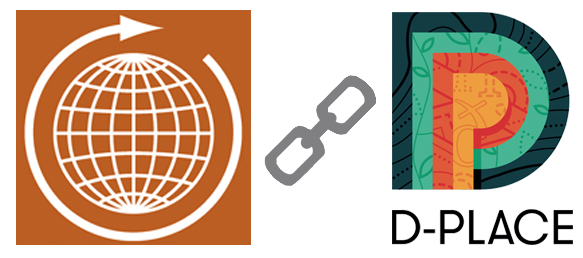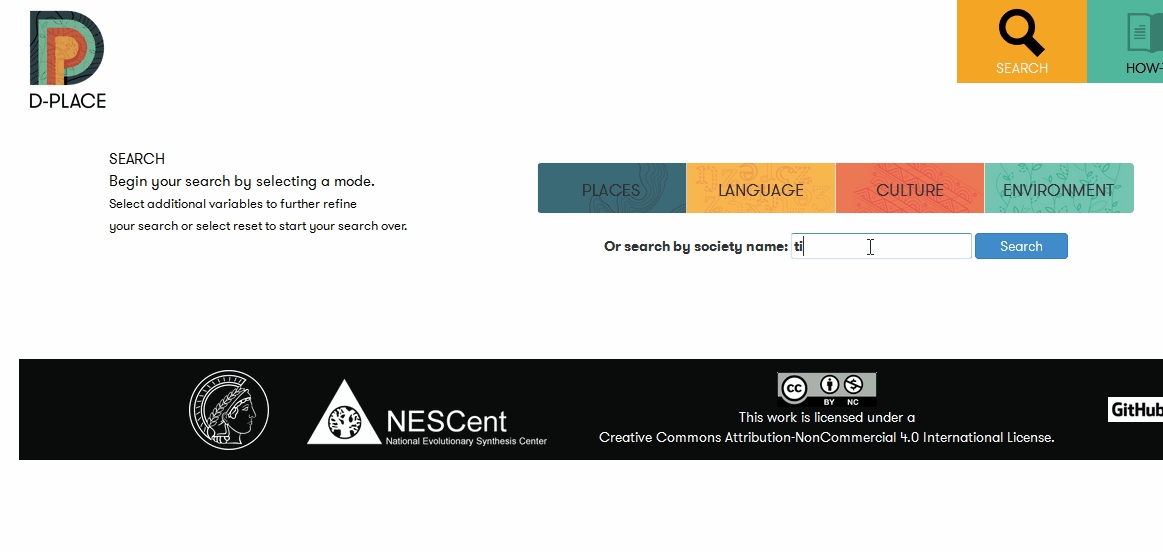By Francine Barone
 We are pleased to share information about the Human Relations Area Files’ collaboration with D-PLACE, the Database of Places, Language, Culture, and Environment.
We are pleased to share information about the Human Relations Area Files’ collaboration with D-PLACE, the Database of Places, Language, Culture, and Environment.
D-PLACE is an expandable and open-access database that brings together a dispersed corpus of information on the geography, language, culture, and environment of over 1400 human societies. Supported in part by the Max Planck Institute for the Science of Human History (MPI SHH), a sponsoring member of HRAF, D-PLACE is a perfect companion to our eHRAF World Cultures database. In fact, HRAF’s President, Carol Ember, has been collaborating with the international team that put together D-PLACE to ensure integration across the databases.
Most of the coded variables in D-PLACE come from the Ethnographic Atlas which was compiled by George P. Murdock, the intellectual founder of HRAF. Each culture page in D-PLACE for the societies that are included in eHRAF have direct links into our eHRAF World Cultures database, so you can easily find your way to eHRAF while browsing D-PLACE.
While D-PLACE and eHRAF are each ideal databases for cross-cultural research, there are noteworthy differences between them. D-PLACE contains some coded information for selected aspects of culture and environment as well as language families and language trees. The interface allows you to search and sort your results as well as visualize culture and variable results in a map or tree on-screen. It mostly has coded data for the time and place focus used by the Ethnographic Atlas, as well as bibliographic references to original ethnographic sources for the data, but does not contain texts of those original sources.
You will likely notice right away that eHRAF World Cultures is unique in containing finely subject-indexed ethnographic material on all (or almost all) aspects of social and cultural life. Our analysts index all ethnographic materials at the document and paragraph level using subject identifiers from the Outline of Cultural Materials (OCM) to enable efficient searching across documents and cultures. With this richness of content, the eHRAF databases can be used in conjunction with D-PLACE’s coded data to provide depth and supportive evidence; to explore aspects of cultural and social life for other subjects not included in D-PLACE; and to explore other time frames and intra-cultural variation.

D-PLACE search results take you to culture information in eHRAF World Cultures
eHRAF World Cultures will also soon include the matching documents for the Ethnographic Atlas cases, and links from eHRAF into D-PLACE.
The introduction of D-PLACE is excellent news for eHRAF users. It means that you can:
- discover coded variables that match eHRAF cases
- find out what other cultures around the world share similar features
- visualize some traits on worldwide maps or trees
Additionally, you can follow links from the coded data in D-PLACE directly into the eHRAF World Cultures database to view more information, and, if you are accessing from a subscribing HRAF member institution, read cultural descriptions, summaries, and browse or search ethnographic texts for related subjects and keywords. D-PLACE provides the culture identifiers from eHRAF (based on the Outline of World Cultures) alongside other identifiers from other databases and samples to facilitate comparisons, which is also a useful aid for eHRAF users who may be utilizing other sources of coded data.
We invite you to utilize both databases as complementary resources for cross-cultural research.
Accessing eHRAF
Visitors to eHRAF who do not belong to a subscribing member institution have limited access to our databases. Only members can fully explore and search our collections. If your university or school is not on this list, contact HRAF Member Services at hraf@yale.edu, to set up a free trial.
Don’t forget to take a look at our other products.